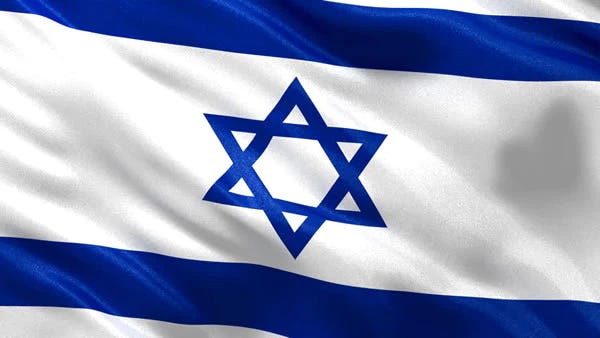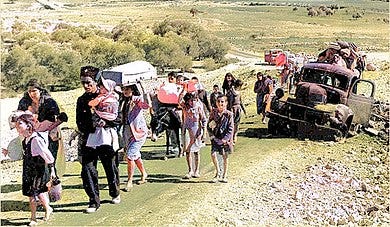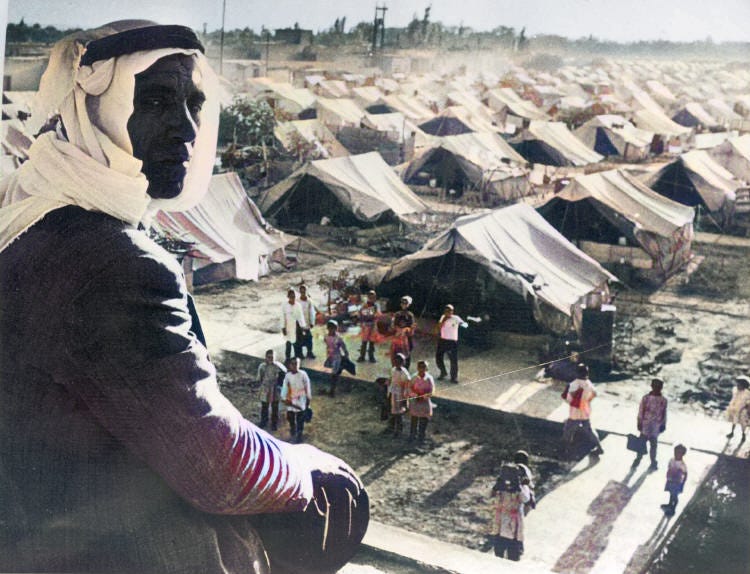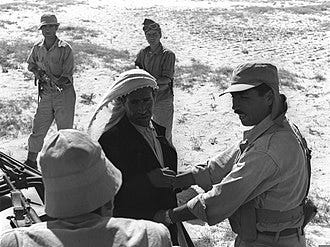The Palestinian Refugee Problem
Or, How the International Community are Using the Arabs as Pawns Against Israel
This started out as a simple reposting of Episode V of A Short History of Israel, but the more facts I added the further it got from the original and the longer it got. So I decided to change the name and send it out into the world as a stand alone post. I also, think this post is the most important in regards to the current situation. It really gets to the heart of the matter and the truth of what really happened. I’m not saying that Israel is entirely guiltless in the creation of the refugee problem but the real history shows that it was mostly the Arabs themselves that are responsible for the situation. Also I believe that the uniqueness in the way the “Palestinian refugees” are treated, is unlike anything in history and Israel should not be held accountable for the failure of the UN and the international community over the last 75 years.
History of the issue:
During the Civil War in British Mandated Palestine and the 1948 Arab–Israeli War that followed, 711,000 Arabs fled or were expelled from their homes, a displacement known to them as the Nakba (catastrophe), this number does not include the 156,000 Arabs that remained in the country and became Israeli citizens.
About 300,000 Arabs fled or were expelled during the 1947-1948 Civil War. The expulsion of Arabs was the reason the Arab League listed to justify their invasion in 1948. However, many factors were really responsible for the the flight of the Arabs from Israel, including the demoralizing impact of the wealthier Arab classes fleeing, Arab evacuation orders, the collapse of Arab leadership, an unwillingness to live under Jewish control, Israeli military successes, psychological warfare by Israeli forces, the Deir Yassin massacre and fears of another massacre by the Zionist militias, and finally, direct expulsion orders by Israeli authorities.
In the first few months of the civil war, the climate in Mandatory Palestine became increasingly volatile, even though both Arab and Jewish leaders tried to limit hostilities. This period was initially marked by Arab attacks against Jews and Jewish defensiveness in the face of these attacks, but was increasingly punctuated by Jewish reprisals. The Zionist militia groups (or terrorists, depending on your point of view), Irgun and Lehi reverted to their 1937–1939 strategy of indiscriminate attacks against Arabs by throwing grenades into, or placing bombs near crowded places such as bus stops, and markets. Their attacks on British forces, reduced British troops' ability and willingness to protect Jews from Arab attacks. As general conditions deteriorated and the economic situation became unstable, some Arab leaders sent their families abroad. Rumors spread that the Husseini Clan (a prominent Arab clan, which claims it's descent from the grandson of Muhammad), who’s leader at the time, the ever popular Amin al-Husseini, was planning to bring in bands of Fellahin (peasant farmers) from Egypt to take over the towns. The Arab Liberation Army (ALA) embarked on a systematic evacuation of non-combatants from several frontier villages in order to turn them into military strongholds. The largest flights of Arabs occurred in villages close to Jewish settlements and in vulnerable neighborhoods in Haifa, Jaffa and West Jerusalem. The more impoverished inhabitants of these neighborhoods generally fled to other parts of the city but those who could afford to flee further away did so, expecting to return when the troubles were over. By the end of March 1948 thirty villages saw their entire Arab population flee. Approximately 100,000 Arabs had fled to parts of the Mandate with an Arab majority, such as Gaza, Beersheba, Haifa, Nazareth, Nablus, Jaffa and Bethlehem. Arab leaders and middle and upper-class Arab families that fled usually went to Jordan, Lebanon or Egypt.
On March 22, 1948, Arab governments agreed that their consulates in the Mandate would issue entry visas only to the sick, old people, women and children. Also in late March 1948, the Haganah Intelligence Service (HIS) reported that the Arab Higher Committee were no longer approving exit permits for fear of causing panic in the country. The Haganah was instructed by David Ben-Gurion and the Jewish Agency, to avoid spreading the panic by halting their indiscriminate attacks as well as their provocations of the British. On January 31, Lehi attacked a bus leaving Qisarya, which killed two and injured six people. This precipitated the flight of most of the population, who fled to nearby al-Tantura. The Haganah occupied the village because the land was owned by the Palestine Jewish Colonization Association and, fearing that the British would force them to leave, decided to demolish the houses. According to Israeli historian Benny Morris, the destruction of the village, had more to do with the increase of illegal Jewish immigration than the ongoing civil war. Several Arab communities were expelled by the Haganah and several others were chased away by the Irgun in attacks that were not authorized by David Ben-Gurion. During this period, Arab evacuees from the towns and villages left, largely because of Jewish attacks or fear of impending attack. However, there was an extremely small, almost insignificant number of the refugees during this early period that left because of Jewish expulsion orders or forceful 'advice' to that effect.
In Haifa half of the Arab community fled the city before the final battle, and another 15,000 left, apparently voluntarily, during the fighting while the rest, 25,000, were ordered to leave, by the Arab Higher Committee not the Israelis. There was no grand plan regarding this departure from the Jewish Agency perspective, in fact Haifa’s Jewish leadership tried to convince Arabs to stay, to no avail. On the other hand, there is clear evidence that there was, a concerted effort on the part of Haganah officials to cause Arabs to flee Haifa. Mortar attacks on Haifa on April 21 and 22 were conducted to break Arab morale in order to bring about a swift end to resistance and speedy surrender. It also had the “added benefit” of causing a major panic among the Arab population. According to witnesses three-inch mortars "opened up on the market square where there was a great crowd. A great panic took hold, the multitude burst into the port, pushed aside the policemen, charged the boats and began to flee out to sea.
By May 1 1948, two weeks before the Israeli Declaration of Independence nearly 175,000 Arabs (approximately 25%) had already fled. According to Meron Benvenisti, (Israeli political scientist and Deputy Mayor of Jerusalem), the significance of the Irgun and Lehi attack on Deir Yassin cannot be understated, in understanding the flight of so many Arabs. Especially after the Arab press, over the objections of the survivors of the attack, inflated the death toll and the number and type of atrocities committed by the militias. Benvenisti regards Deir Yassin as "a turning point in the annals of the destruction of the Arab landscape". For the complete story on Deir Yassin click below (it is about 2/3 of the way down.
Haganah, was also very successful at psychological warfare broadcasts from loudspeaker vans and radio broadcasts. Haganah Radio announced that "the day of judgement had arrived" and called on Jewish inhabitants to "kick out the foreign criminals" and to "move away from every house and street, from every neighborhood occupied by foreign criminals". The Haganah broadcasts called on the populace to "evacuate the women, the children and the old immediately, and send them to a safe haven". Because of their lack of weapons and the fact that they were always outnumbered, the Jewish battle tactics were designed to stun and quickly overpower opposition. Demoralization was a primary aim, it was deemed just as important to the outcome, as the physical destruction of Arab units. The mortar barrages, psychological warfare broadcasts, and the tactics employed by infantry units were all geared to this goal.
The Israeli operations called Danny and Dekel were the start of the third phase of expulsions. The largest single expulsion of the war took place in Lydda and Ramle on July 14, 1948, when 60,000 inhabitants of the two cities were forcibly expelled on the orders of David Ben-Gurion and Yitzhak Rabin. In Ben-Gurion's view Ramle and Lydda constituted a special danger because their proximity might encourage cooperation between the Egyptian army, which had just attacked Kibbutz Negba, and the Arab Legion, which had taken the Lydda police station. Originally, all males in Lydda had been rounded up and secured in a compound, but after some shooting was heard and thought to be the beginning of an Arab Legion counteroffensive, the arrests were stopped and the immediate eviction of all Arabs, including women, children, and the elderly were ordered. In explanation, Ben-Gurion said that
"Those who made war on us bear responsibility after their defeat."
Later Yitzhak Rabin wrote in his memoirs Soldier of Peace:
“What would we do with the 50,000 civilians in the two cities. Not even Ben-Gurion could offer a solution, and during the discussion at operation headquarters, he remained silent, as was his habit in such situations. Clearly, we could not leave [Lydda's] hostile and armed populace in our rear, where it could endanger the supply route for the troops who were advancing eastward. Allon repeated the question. “What is to be done with the population?” Ben-Gurion waved his hand in a gesture that said, Drive them out! "Driving out" is a term with a harsh ring. Psychologically, this was one of the most difficult actions we undertook. The population of [Lydda] did not leave willingly. There was no way of avoiding the use of force and warning shots in order to make the inhabitants march the 10 to 15 miles to the point where they met up with the Legion.”
On July 16, three days after the Lydda and Ramle evictions, the city of Nazareth surrendered to the IDF. The officer in command, a Canadian Jew named Ben Dunkelman, had signed the surrender agreement on behalf of the Israeli army along with General Chaim Laskov. The agreement assured the civilians that they would not be harmed, but the next day, Laskov handed Dunkelman an order to evacuate the population, which Dunkelman refused. In total, about 100,000 Arabs became refugees in this stage of the war.
In the third and last period of the Arab flight, the departure of the Arabs matched Israeli military accomplishments. Operations Yoav, Operation El Ha-Har and Operation Hiram in October, cleared the road to the Negev, the Jerusalem Corridor and captured the Upper Galilee. Operation Horev in December and Operation Uvda in March 1949, which completed the capture of the Negev, were all met with resistance from the Arabs who chose to stand and fight, rather than flee or stay and live in a Jewish state. In the Galilee it was clear to the villagers that if they left their homes, return was far from imminent. Therefore, far fewer villages spontaneously fled then in other regions.
The UN, using the offices of the United Nations Truce Supervision Organization and the Mixed Armistice Commissions were involved in the conflict from the very beginning. By the autumn of 1948 the refugee problem was already a fact and many possible solutions were discussed. Count Folke Bernadotte said on September 16, 1948, the day before his assassination:
“No settlement can be just and complete if recognition is not accorded to the right of the Arab refugee to return to the home from which he has been dislodged. It would be an offence against the principles of elemental justice if these innocent victims of the conflict were denied the right to return to their homes while Jewish immigrants flow into Palestine, and indeed, offer the threat of permanent replacement of the Arab refugees who have been rooted in the land for centuries.”
Of course the Israeli government had a different take on the situation. A majority of Jews in Israel as well as the Israeli government, believe that God gave the land to Abraham 4,000 years ago and throughout all the invasions, expulsions, pogroms and holocausts there have always been Jews in Israel. Therefore they were just retaking a land promised to them, from which they had be expelled and to which they were not allowed to return. Then after their expulsion from their homeland, they were persecuted around the world and throughout the ages.
On November 9 1948, the UN Relief for Palestine Refugees (UNRPR) was established, to provide emergency relief to Palestine refugees in coordination with other UN or humanitarian agencies. According to the UNRWA a “Palestinian Refugee” is a "person whose regular place of residence was Palestine during the period of June 1 1946 to May 15 1948, and who lost both home and means of livelihood as a result of the 1948 conflict." Less than a month later, in response to the political aspects of the conflict, the General Assembly adopted Resolution 194, creating the United Nations Conciliation Commission for Palestine (UNCCP), which in collaboration with the UNRPR, was mandated to help achieve a final settlement between the warring parties, including facilitating "the repatriation, resettlement and economic and social rehabilitation of the refugees", including he Palestinians’ right to return to their homes. On December 8, 1949, the General Assembly adopted Resolution 302(IV), which established the United Nations Relief and Works Agency for Palestine Refugees in the Near East (UNRWA). The resolution was adopted and passed unopposed. It was even supported by Israel and the Arab states. UNRWA succeeded the UNRPR with a broader mandate for humanitarian assistance and development as well as the requirement for neutrality. When it began operations in 1950, the initial scope of its work was direct relief and works programs to Palestine refugees, in order to prevent conditions of starvation and distress and to further conditions of peace and stability. UNRWA's mandate was soon expanded through Resolution 393(V) (December 2 1950), which instructed the agency to establish a reintegration fund, for the permanent resettlement of refugees and to facilitate their removal from relief rolls. A subsequent resolution, dated January 26 1952, allocated four times as much funding to resettlement than on relief, but requested UNRWA continue providing programs for health care, education, and general welfare. However, as we will see, that never happened.
The Six Day War, in June of 1967 initiated another wave of Arab refugees, up to 350,000 Arabs left areas that were captured by Israel, of which 145,000 had been refugees from the 1948 war. However, unlike in 1948, there was no Israeli policy to expel Arabs from captured territory. In fact there was an order given by Defense Minister Moshe Dayan, that no Arab should be ejected or expelled, either by coercion or force, from the places they currently inhabit. Arab populations fled, regardless of Israeli orders for the same reasons as the 1948 refugees did, and while most of the 1967 refugees were given permission to return by Israel, the vast majority of them did not, choosing to remain refugees because it would be better than living under Jewish rule. These Palestinian refugees could not be included in the original UNRWA definition and since 1991, the UN General Assembly has adopted an annual resolution allowing the 1967 refugees to be included within the UNRWA mandate.
“To us, the refugees issue is the winning card which means the end of the Israeli state”
Sakher Habash, one of the founders of Fatah and and aide of Yasser Arafat
Initially the response of host Arab states to the incoming Palestinian refugees was to offer them refuge on the assumption that it would be temporary. When it became obvious that the problem would be a protracted one, the initial Arab sympathy became coupled with the insistence that Israel is ultimately responsible for them, and the policies of Arab states toward the refugees changed. As a result, most Arab governments strongly opposed resettlement and naturalization of the refugees. Instead, they adopted policies and procedures aimed at preserving the Palestinian identity and their status as refugees. In September 1965 the Council of Foreign Ministers of the League of Arab States formally acknowledged certain rights for Palestinians by signing the Protocol for the Treatment of Palestinians in Arab States, known as the Casablanca Protocol. This brief document called upon member states to "take the necessary measures" to guarantee to Palestinians full residency rights, freedom of movement within and among Arab countries, and the right to work on a par with citizens. But the protocol's good intentions clashed with subsequent developments on the ground. As a result, few Palestinians in the Arab world now enjoy a secure right to remain in their country of residence.
To illustrate the absurdity of the “Palestinian refugee problem,” one need only look at the status accorded to the Palestinians by their fellow Arab countries, where they share a common language, culture, and for the most part, religion. It was those countries that invaded Israel in 1948 in order to “help the Arabs of Palestine,” or so at least they claim. Let’s look at how the various Arab countries deal with their “refugees”:
Lebanon:
Palestinian refugees are prohibited from obtaining Lebanese citizenship, and are denied rights that guarantee them permanent housing, employment, property, social contacts, and family reunification. There are severe restrictions on their rights to employment that often prevent Palestinians from being able to improve their standard of living.
“It is perfectly clear that Arab nations do not want to solve the Arab refugee problem. They want to keep it as an open sore, as an affront against the United Nations and as a weapon against Israel. Arab leaders don’t give a damn whether the refugees live or die.”
Lt. Gen. Sir Alexander Galloway, former Director of UNRWA in Jordan
Syria:
Palestinian refugees have no civil or political rights, and receive a merely nominal citizenship status. Long ago they should have been considered full-fledged Syrians, yet due to political brainwashing they remain in Syria as a foreign entity, daydreaming about the “right of return” and stuck forever in their inferior state.
Iraq:
Palestinian refugees are denied citizenship and are prohibited from purchasing land and homes. Palestinians complain of increasing difficulty in obtaining visas and the humiliations involved in the application process, which requires renewal every two months. Lack of valid residency documentation puts them at risk of abuse and imprisonment whenever they are asked to identify themselves at one of the many checkpoints across the country. Dozens of Palestinians have been kidnapped, tortured, and killed in Iraq with the assistance and compliance of the security forces. Many refugees receive either written or verbal death threats to leave their homes. Many Palestinians in Iraq have stopped sending their children to school or to find work, and feel trapped in their homes.
Kuwait:
The 1990 occupation of Kuwait by Iraq was supported by the PLO and after Operation Desert Storm liberated the country, the Kuwait’s deported their 450,000 Palestinians, most of them to Iraq. This large deportation has barely earned any mention in academic studies or in the international media.
Egypt:
Palestinian refugees are denied rights that would allow them to gain permanent housing, employment, property, community ties, and family reunification. Therefore refugees in Egypt suffer from restrictions on land purchases, education, and are limited in their choice of professions.
Libya:
In 1995, then Libyan leader Muammar Gaddafi announced his decision to deport thirty thousand Palestinians because of his opposition to the Oslo Accords signed by the PLO and Israel. Gaddafi’s also passed laws making the lives of the Palestinians either difficult or impossible, including a special tax, a ban on work in certain places, a prohibition of family visits, and other restrictions. At the same time as the laws were passed, a Libyan-sponsored “human rights” aid ship set sail to the Gaza Strip.
Jordan:
This is an unusual case, as most of the Palestinians living in Jordan were granted full citizenship when it formally annexed the West Bank in 1950. Jordan has the largest Palestinian community of all the host countries; however, the Palestinians are not equal in terms of political participation and are largely underrepresented in the Jordanian Parliament and Senate. In addition, Jordan has done nothing to dismantle the Palestinian refugee camps.
Palestinian Authority:
One would think that this would be the one entity that would do the most to alleviate the suffering of the own people. The Palestinian Authority was established in 1994 as an outcome of the Oslo peace process. It was given responsibility and authority over the majority of densely populated Arab cities in Judea and Samaria. Aided by billions of dollars in international aid, this newly established entity could have easily resettled the “refugees” under its control, thereby alleviating one of the most contentious issues at the heart of the conflict. However, over twenty years have passed and nothing has been done. Why? For the exact same reason that the Arab states have not resettled and given them rights: to utilize them as fuel in the battle for the destruction of the State of Israel.
Israel:
As it turns out, it is Arabs under Israeli rule who enjoy freedom and growth unparalleled to that of any Arab country. This includes both the Israeli Arabs, who were granted full Israeli citizenship and enjoy conditions better than those in any Arab state, and the Arabs in Judea and Samaria including the “refugees” amongst them. Compared to the harsh living conditions of the Arab states, Palestinians who lived under Israeli rule from 1967 up until the implementation of the Oslo Accords enjoyed a steady rise in living standards, employment, health services and life expectancy, as well as a dramatic reduction in infant mortality and a tremendous growth of higher education.
As a comparison to how the Palestinians are treated by the UN, let’s look at the UN refugee agency for ever other refugee in the world.
In 1950, to address the refugee issue resulting from World War II, the UN created the United Nations High Commissioner for Refugees (UNHCR). According to UNHCR, a refugee is a person “owing to well-founded fear of persecution, for reasons of race, religion, nationality, membership of a particular social group or political opinion, is outside the country of his nationality, and is unable or, owing to such fear, is unwilling to avail himself of the protection of that country; or who, not having a nationality and being outside the country of his former habitual residence as a result of such events, is unable or, owing to such fear, is unwilling to return to it.” Obviously, the definition of a refugee according to the UNHCR is very different from the definition of a Palestinian refugee. The fact that the two definitions are at odds is merely the tip of the iceberg in understanding the hypocrisy and double standards surrounding the “Palestinian refugees.” The UN uses a separate agency for the Palestinians in order to continue perpetuating the refugee status of the Palestinians, because the vast majority of “Palestinian refugees” would not be considered refugees according to the regular UN standard.
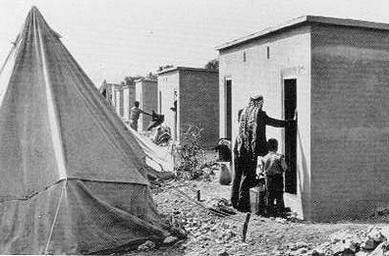
There are several significant differences between the way the UNHCR handles their refugees and the way the UNRWA handles the Palestinian refugees. I’ve highlighted them as follows:
Duration of time where the refugee lived before fleeing
A regular refugee must prove that he is a refugee from the country of their birth or from a place in which they maintained a permanent residency.
A Palestinian refugee must prove that they resided in Mandatory Palestine starting from June 1946 – only two years prior to the 1948 Israeli War of Independence. This vague criteria was mandated by the UN knowing that a large amount of Arabs in Mandatory Palestine were migrant workers who immigrated from neighboring Arab countries seeking work opportunities, following the economic prosperity created by the efforts of the Israelis. They were not permanent residents, and a large number of them had no official legal status. Thus, the standard UN refugee definition does not apply to them and a special criterion was needed.
Circumstances of displacement
A regular refugee must prove that he was forcefully displaced from his land against his will.
A Palestinian refugee does not need to prove that he was forcefully displaced from his land against his will. Most of the Palestinian refugees obeyed the call from their Arab leaders in 1948 and voluntarily as we have seen. Only a small percentage were expelled by Israeli forces.
Refugee status for future generations and the legal status of family members of refugees
For a regular refugee only the person who was forced to flee is granted refugee status; not their family members, and certainly not their children and grandchildren, in perpetuity.
For a Palestinian refugee, refugee status is genetic and generational. Not only does the spouse of the refugee receive refugee status, but the children and grandchildren do as well. Actually, there is no limit to the number of generations of “Palestinian refugees.” Today, there are fourth generation “Palestinian refugees” who are descendants of migrant workers who arrived some two years before the 1948 war.
A refugee who committed war crimes, crimes against humanity and/or terrorist activity
A regular refugee who commits war crimes, crimes against humanity, or terrorist activity automatic forfeits his refugee status.
A Palestinian refugee does not lose his status under any condition, even if he is found guilty of committing crimes against humanity and/or is engaged in terrorist activity. There are many examples of Palestinian terrorists who have carried out terror attacks yet still enjoy UN refugee status, with all of its benefits.
“I am sure that there are Hamas members on the UNRWA payroll and I don’t see that as a crime”
Peter Hanson, former UNRWA Commissioner-General
Refugee status after acquiring citizenship in another country
A regular refugee loses his refugee status immediately upon acquisition of citizenship in another country.
A Palestinian refugee does not lose his status even after receiving citizenship in another country. For example, there have been over one million Palestinian “refugees” that were granted Jordanian citizenship, yet are still regarded as refugees. Furthermore, there are Palestinian “refugees” who hold citizenship from various countries in Western Europe, the United States, and Canada – yet are still regarded as refugees. There is even a small number of “Palestinian refugees” who hold Israeli citizenship.
Refugee status in relation to socio-economic standing
A regular refugee loses their refugee status if they acquired assets, wealth and succeeded in rehabilitating his economic standing.
A Palestinian refugee never loses their refugee status, no matter how much they improve their economic status. In other words a Palestinian refugee could be a millionaire but still also be a refugee.
And in what might be the greatest absurdity of all. The UNRWA has never conducted a population census that provides specific information regarding the number of refugees (which is currently estimated today at some five million). Therefore there is no way to track a refugee who has already died, or to remove an ineligible refugee from the registry, if the UN ever got the idea to do that.
Following World War II, UNHCR was charged with caring for some 60 million refugees. The immense refugee crisis created by WWII was brilliantly handled by UNHCR, and as of today there is not one refugee from the war who was not resettled. While UNHCR was resettling millions of refugees, UNRWA was mandated to assist – and only to assist, not to resettle – the Palestinian Arabs who fled or who were forced to leave their homes during Israel’s War of Independence. The official number of Palestinian refugees provided by UNRWA personnel in 1949-1950 was roughly 711,000. Since 1948, the number of Palestinian “refugees” has grown to five million, not because of more people being expelled from Israel, but because of the unique generational aspect of their situation. This means that unlike UNHCR that has successfully resettled and rehabilitated millions of refugees, UNRWA has been counterproductive. Also the UNHCR is strictly forbidden from getting involved with “Palestinian refugees.” In other words, the United Nations maintains two separate agencies whose job is to care for refugees: UNHCR, which handles all the world’s tens of millions of refugees (including in other areas of the Middle East), and UNRWA, which only handles the “Palestinian refugees” even though they initially numbered fewer than 711,000. In light of this, the obvious question arises: Why is there a need for two different refugee agencies? This question is especially perplexing considering the fact that UNRWA has never resettled even a single “Palestinian refugee” since 1949.
In the past 78 years there have been several occasions where the UNHCR and the international community have worked together to solve a refugee problem, including the partition of India and Pakistan, which saw 7.5 million Hindus move to India and 6 million Muslims move to Pakistan. Also during the breakup of the Soviet Union in the early 90s, 1 million Muslims were resettled in Azerbaijan and a similar number of Christians were moved to Armenia. All of these other refugees received aid from UNHCR and all were resettled. Then why is it that the Palestinian refugee problem not been solved in the same manner? “Palestinian refugees” are the only refugee group in the world for which an exclusive refugee agency was created by the UN, and yet they are also the only refugee group in the world whose prolonged situation has not yet been resolved.
This might be going out on a skinny limb here but it really seems like the UN and the international community have done this deliberately. As I said in the very beginning of A Short History of Israel, antisemitism might be the only thing most people in the world have in common.
In the original Part V of A Short History of Israel I laid out what I thought could be a workable plan for the solution to this long-standing thorn in the side of Israel, but after the events of October 7 and the following weeks I think my plan has turned to ash. You can click below and read that plan if you wish to.
It seems like this will be either another in a long line of Israeli interventions in Gaza (always after serious provocations) or maybe this time they will finally tell the world to piss off and finish the job once and for all. Of course this will quickly turn into a two front war with the terrorists in Hezbollah coming to the aid of their friends in Gaza. Israel must be ready to weather every talking head on TV, in the current administration and especially the UN, repeating over and over that there is difference between Hamas and the Palestinian people, and Israel should show restraint. It is my belief that Israel has shown enough restraint and it is high time that they get the job done. While not every Palestinian is a member of Hamas, a majority voted for them in the last election, they are the biggest party in the Legislative Council, and given the outpouring of support they have received from “regular Gazans” for their despicable actions on October 7, it shows that the residents of Gaza have a pretty cozy relationship with Hamas and their support seems to increase whenever they conduct terrorist operations against Israel.
Please share this post with as many people as you can. We, the supporters of Israel, must get the truth out there and counteract the lies being spread by the evil terrorists and their lackeys in Congress, the media and in “higher education”.
Chris




